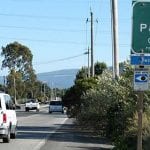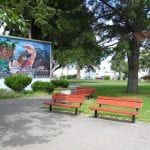Just north of downtown Oakland, the Telegraph-Northgate neighborhood displays familiar signs of disinvestment: the major retail corridors are lined with vacant storefronts; the older houses are crumbling; and the parks are filled with graffiti and shards of glass. But if you spend an hour strolling down Telegraph Avenue, you will come across Leroy’s twenty-five year old bicycle shop, a destination for East Bay bicyclists. If you stop by Quality Market and manage to make Mohammed chuckle, you may be rewarded with a free soda. You may also meet Sister Carole Anne who runs a drop-in center for homeless women–financed by the murder mystery novels she writes about nuns. For the past year and half community members of this neighborhood have taken encouraging steps to revitalize the Telegraph-Northgate neighborhood-the area bounded by 20th to 27th Streets and Telegraph and San Pablo Avenues.
During the summer of 1998, the newly formed Telegraph-Northgate Neighborhood Association launched a grassroots initiative to create a more livable and safe neighborhood. Made up of merchants, residents, and service care providers, the neighborhood association enlisted help from Urban Ecology and the City of Oakland to create a neighborhood plan. Competing interests in a community can often thwart attempts at change: merchants may see increasing homeless services as a threat to their businesses. Non-profits may see market-rate development as a threat to affordability. But, the Telegraph-Northgate neighborhood is unique: a year-long dialogue has produced a vision inclusive of all its community members.
After three community workshops, three focus groups, a year of association meetings, and hours of design and planning analysis, this document provides a basic framework for revitalizing the Telegraph-Northgate neighborhood. The plan includes general guidelines and specific proposals for attracting retail that fulfills the community’s day-to-day needs. Community members expressed the need to calm and divert automobile traffic so that pedestrians and bicyclists are favored on neighborhood streets. Merchants and residents want to create neighborhood amenities such as a community center, a plaza and a library, which were identified in the workshops as essential components to an active civic life. Community members want to restore nature into their neighborhoods by lining the streets with trees and transforming parking lots into parks.
Many of these hopes are not radical. However, in a time where public resources are limited, communities have been forced to identify creative ways of leveraging funds to improve their neighborhoods. The purpose of the Telegraph-Northgate Community Plan is to record this participatory planning process, recommend policies and urban design solutions to the neighborhood’s challenges, and outline private and public funding sources. The participatory planning process allowed community members to make decisions about where they live, work and play. This document now serves as a tool for community members to advocate for their vision. As resident Gwen “Hollywood” Patton said at the first community workshop, “We first started by cleaning up trash on the streets, and now we’re turning this place into paradise!”
Telegraph-Northgate Neighborhood Plan
Telegraph-Northgate Neighborhood Association
City of Oakland
Urban Ecology
In 1999, the Telegraph-Northgate Neigh- borhood Association and Urban Ecology initiated a neighborhood planning process funded by the City of Oakland.
The Telegraph-Northgate neighborhood, located just north of downtown Oakland, is home to several historical buildings. Small businesses line Telegraph Avenue, and there are several supported housing providers in the neighborhood. Telegraph-Northgate faces challenges familiar to urban areas that have experienced disinvestment and decline: a major freeway slices through it, the store- front vacancy rate is 20%, and the streets are unsafe for pedestrians and bicyclists. The Telegraph-Northgate Neighborhood Association, made up of residents, merchants and social service pro- viders, initiated the planning effort to counter these problems and create a more livable and safe neighborhood.
Completed in 2000, the neighborhood plan makes policy and design recom- mendations focusing on four main areas:
– Identify sites for parks and integrate nature into the neighborhood
– Design traffic calming methods on neighborhood streets
– Devise methods to strengthen Telegraph Avenue into a strong retail spine
– Define a boundary between the neigh- borhood and downtown
With assistance from Urban Ecology, the Neighborhood Association is currently using the plan to guide new private development and advocate for park and streetscape improvements by the City of Oakland.
http://www.urbanecology.org/neighborhood/telegate-neigh.pdf





